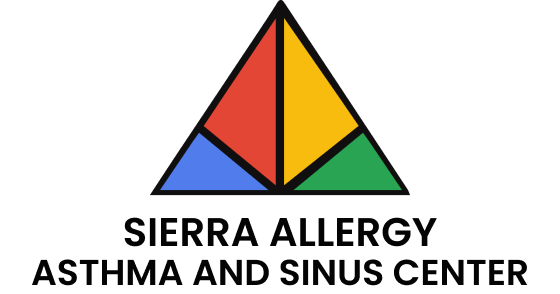When the flowers bloom, the trees sway, and the air smells fresh, it is beautiful outside. But for many of us, spring and fall bring something else too: sneezing fits, watery eyes, itchy skin, and more. These are all signs of an allergic reaction, and they can make you feel miserable.
So, how can you protect yourself or someone you care about during these high-risk seasons? In this blog, we’ll break down what causes these reactions, what allergic reaction symptoms to watch for, what helps if you get one, and how to prevent them in the first place.
Because at the end of the day, caring for yourself and your loved ones means staying one step ahead.
Understanding allergic reactions
An allergic reaction happens when your immune system overreacts to something harmless like pollen, dust, or pet dander and treats it like a dangerous invader.
Some of the most common allergy triggers include:
- ◉ Pollen (from trees, grass, and weeds)
- ◉ Mold
- ◉ Dust mites
- ◉ Animal dander
- ◉ Insect stings
- ◉ Certain foods
- ◉ Medications
Your body releases chemicals like histamine to fight off these “invaders,” and that’s what causes the uncomfortable symptoms.
Common allergic reaction symptoms to look out for
Allergic reactions can range from mild to severe. Knowing the symptoms can help you catch it early and respond quickly. Here are some signs to watch for:
Mild to moderate symptoms:
- ◉ Sneezing or runny nose
- ◉ Watery or itchy eyes
- ◉ Itchy skin or mild rash
- ◉ Coughing or wheezing
- ◉ Congestion
- ◉ Scratchy throat
Severe symptoms (get emergency help right away):
- ◉ Swelling of the lips, face, or throat
- ◉ Trouble breathing
- ◉ Hives covering large parts of the body
- ◉ Dizziness or fainting
- ◉ Nausea or vomiting
- ◉ Fast heartbeat
This severe form is called anaphylaxis and it can be life-threatening.
What to take for an allergic reaction
When you’re dealing with allergies, the right treatment can make all the difference. Here’s what can help, depending on your symptoms:
1. Antihistamines
Over-the-counter medications like cetirizine (Zyrtec), loratadine (Claritin), or diphenhydramine (Benadryl) help block the effects of histamine, reducing symptoms like sneezing, itching, and rashes.
2. Nasal sprays
Steroid-based sprays like fluticasone (Flonase) can reduce inflammation in your nose and help with sinus-related symptoms.
3. Eye drops
Allergy-specific eye drops can soothe red, itchy eyes.
4. Epinephrine (EpiPen)
If you or a loved one has had a severe allergic reaction before, your doctor may prescribe an EpiPen. It’s a fast-acting shot that can stop anaphylaxis in its tracks.
5. Moisturizers and creams
For skin-related reactions, hydrocortisone creams or soothing lotions can help reduce itching and redness.
Always talk to your doctor before starting a new medication or if you’re unsure about what’s safe for you.
How long does an allergic reaction last?
That depends on the trigger and your body. Here’s a general idea:
- Mild allergic reactions (like sneezing, itchy eyes): Usually last a few hours to a few days, especially if you keep getting exposed to the allergen (like pollen).
- Skin reactions (like hives or rashes): May last a few hours to a couple of days.
- Severe reactions (like anaphylaxis): The main symptoms can happen within minutes and usually require emergency treatment. Recovery can take a few days, depending on the intensity.
The key is to avoid the trigger and take the right medication early.
7 tips to prevent allergic reactions during allergy season
Here are some helpful tips you can keep in mind to prevent allergic reactions.
1. Check pollen forecasts daily
Apps like Pollen.com or WeatherBug give updates on pollen counts in your area. On high-pollen days, try to stay indoors during early mornings and late afternoons when pollen levels peak.
2. Shower and change clothes after being outside
Pollen and allergens cling to your clothes, skin, and hair. A quick rinse and outfit change can stop them from spreading around your home.
3. Keep windows closed
It’s tempting to let fresh air in, but open windows during allergy season can let allergens sneak inside. Use air conditioning with a clean filter instead.
4. Use a HEPA air purifier
A high-efficiency particulate air (HEPA) purifier can trap airborne allergens like dust, pollen, and pet dander, making your indoor air cleaner.
5. Wash bedding weekly in hot water
Dust mites love pillows, blankets, and mattresses. Washing your bedding in hot water kills mites and removes pollen particles.
6. Keep pets clean
If you’re allergic to pet dander, regular baths and grooming can help reduce how much they shed around the house.
7. Talk to your doctor about allergy medications or shots
Sometimes, over-the-counter options aren’t enough. Allergy immunotherapy (allergy shots) can help your body build tolerance to triggers over time.
When to see a doctor for your allergies
If your allergies are stopping you from living your life, it’s time to see a specialist. You should consider visiting an allergy doctor if:
- You have symptoms more than a few times a week
- Over-the-counter medications aren’t working
- Your symptoms affect your sleep or concentration
- You’ve had a serious allergic reaction in the past
- You want long-term relief like allergy shots
Getting tested can help identify exactly what you’re allergic to so you can take smarter steps toward prevention.
Take control, stay safe
Peak allergy seasons don’t have to take control of your life. With the right habits, medications, and knowledge, you can protect yourself and your loved ones from the worst of it.
Remember, you don’t have to suffer in silence. Whether you’re dealing with occasional sneezing or severe allergic reactions, there’s always help available. Caring for your health is the first step to living fully, confidently, and comfortably even during allergy season.
If you’re ever unsure or overwhelmed by your symptoms, don’t hesitate to reach out to a doctor or allergy specialist. We’re here to help because caring for yourself means never settling for discomfort.





